The phrase, “information architecture” means something different to different parts of your organization. But if you’re a software developer, architect, SRE, or other engineering leader, it typically means just one thing: How you define and associate each component in your development ecosystem. While mapping your information architecture is the first step towards improving the discoverability of your services, lack of alignment on how to categorize, connect, and report on each component also makes it one of the most challenging. In a previous blog, we shared a framework any organization can use to align on these critical decision points. In this blog, we’ll share how several features unique to the Cortex platform accelerate this process, while ensuring long-term resilience as your architecture evolves.
Pull from anywhere
The first step in mapping your information architecture isn’t just to know what you have—it’s to know how what you have is already defined and assigned elsewhere. This prevents duplicate work, but more importantly, ensures that your system of record is always up to date with the rest of your ecosystem.
[NEW] ClickUp Integration: The new Cortex ClickUp integration joins our existing JIRA integration to pull critical context like customer requests, security tickets, and ongoing projects right into Cortex. Users can also generate new tickets without leaving Cortex, as a part of the Initiatives workflow tied to any service or resource. Now developers can see and action time-sensitive tasks right within their Developer Homepage.
[NEW] 40+ fully supported integrations: Cortex is always adding to our library of 40+ integrations to ensure a rich system of record across your APM, alerting, logging, monitoring, CI/CD, Git, infra, security, and tracking tools. By bringing data from all across your ecosystem into a single place—along a consolidated timeline—developers have all the information they need to take action without having to hop between tools.
Auto-sync IdP: Cortex integrates with active directory and identity providers like Google, Okta, BambooHR, and Workday to ensure ownership information is always up to date. Connect to quickly sync groups/teams to Cortex.
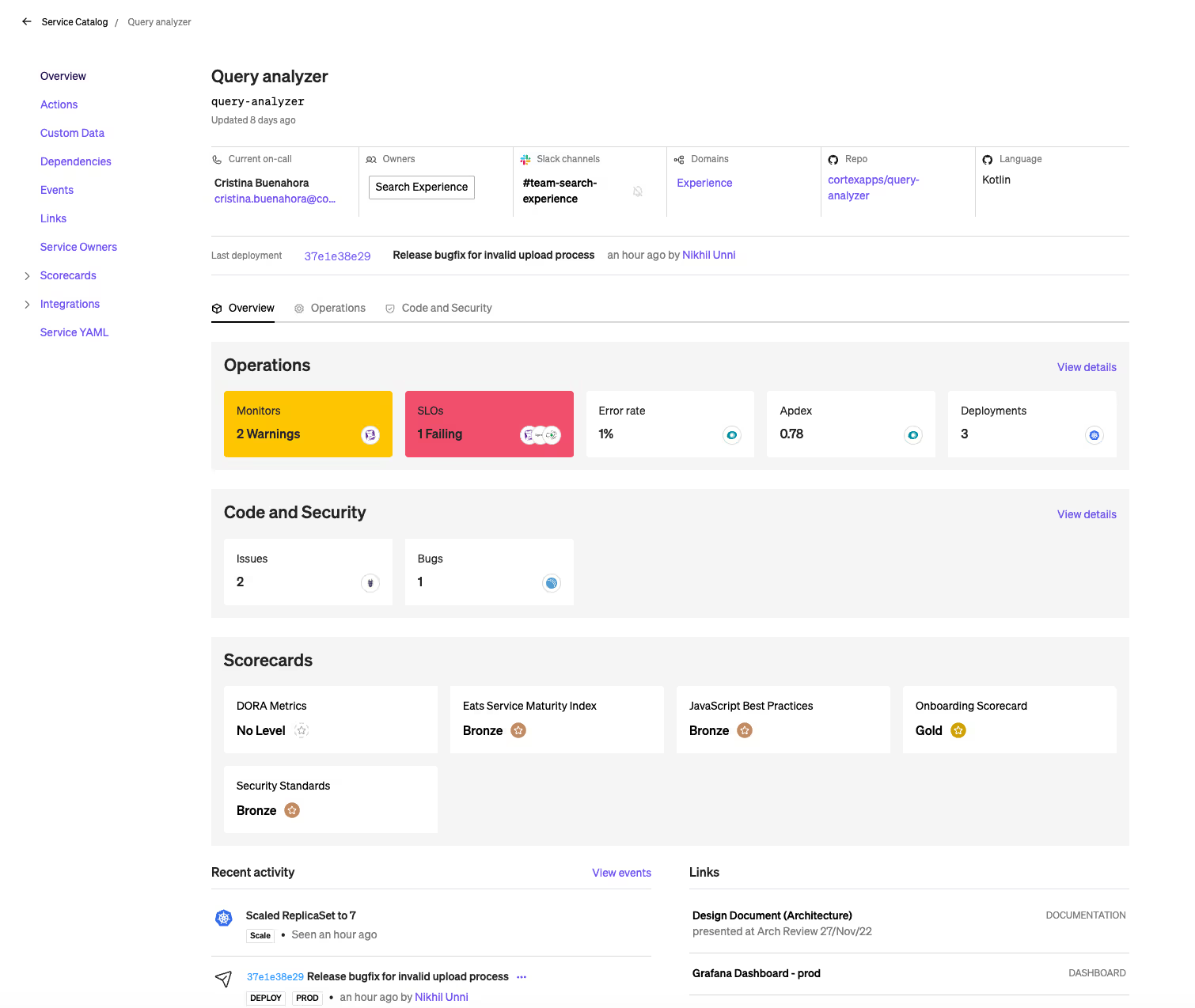
Slice by more than services
The different parts of your development ecosystem need to be treated differently—both in how they’re built as well as how they’re evaluated. Services and resources, for example, will have unique requirements for deployment, security, and compliance, and therefore need to be separated as unique objects in your information architecture. In Cortex, services and resources have long been considered “core primitives” that are central to all work engineering teams undertake. But we know engineering teams may want to group information in different ways for reporting and forecasting purposes. In addition to the below, we’re working on thoughtfully adding more component types for maximum scoring and reporting flexibility.
[NEW] Domains: Last month, Cortex introduced a new core primitive—domains. Domains offer a way to group entities by product area, systems, business units, or any other logical grouping. With this feature, you can unite services, resources, and other entities into a single, hierarchical domain. Domains can include both parents and children, and children can be services, resources, or other domains.
Services: The Cortex Service Catalog enables users to comfortably track thousands of microservices, libraries, and projects related to their services—while also creating unique Initiatives against each that they can then report on by service owner, team, and more.
Resources: The Cortex Resource Catalog enables users to track databases, caches, load balancers, third party vendors, and infrastructure assets that affect their microservices, without treating them like a microservice.
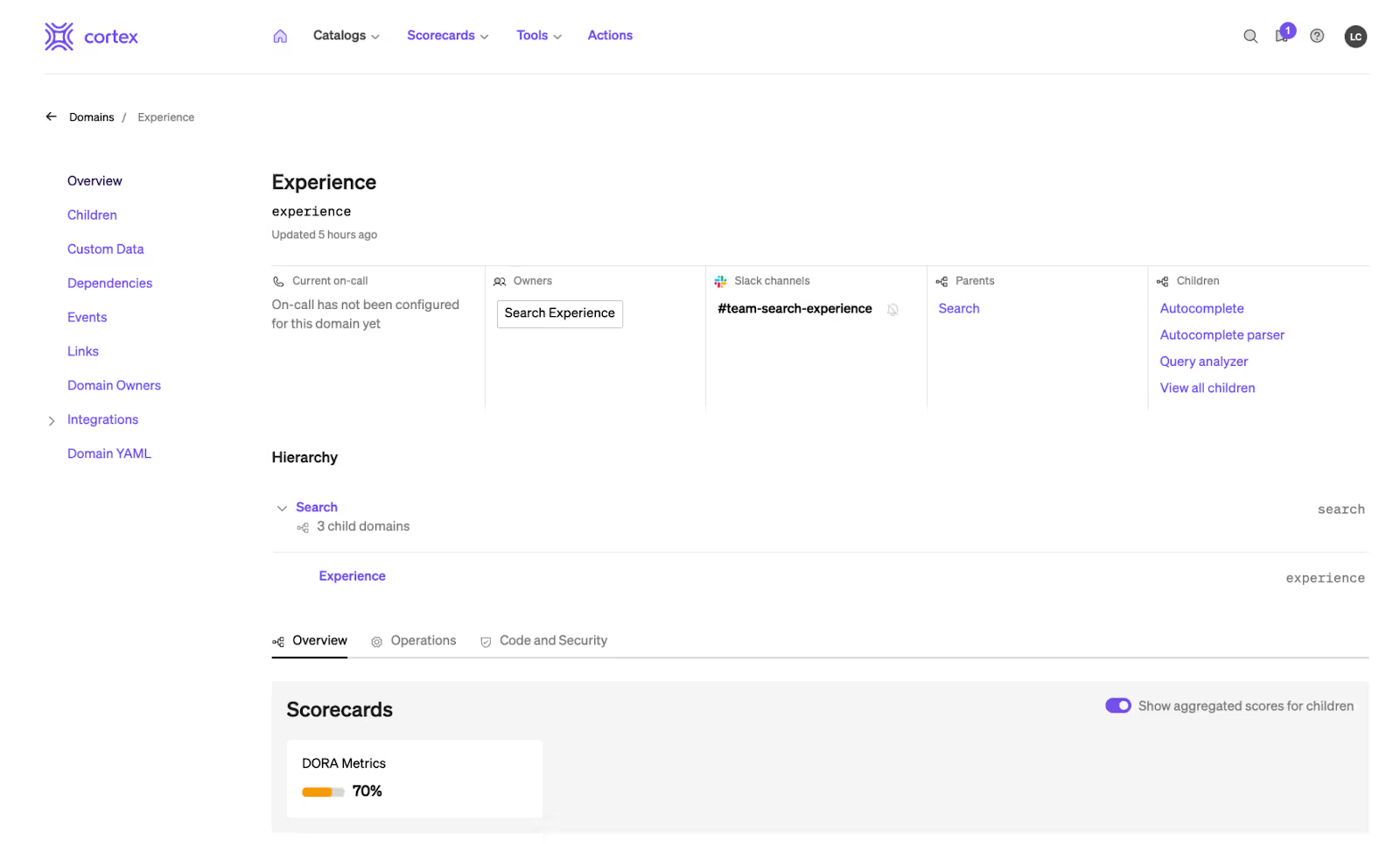
Measure anything, any way
What differentiates an Internal Developer Portal from a basic catalog is the ability to drive action. As you think through the categorization of components, you should also consider how you plan to evaluate and improve them, as well as how you’ll facilitate production of new services and resources that meet defined standards.
Custom Scorecards: Cortex enables users to leverage out-of-the-box Scorecards for common use cases, or build their own by applying any number of free-standing or integration-based rules. For example, your Deployment Readiness Scorecard might include rules like, “Has owner,” “Has repository set,” and “Has on-call assigned in OpsGenie,” while your Service Quality Scorecard might have rules like “Has 80%+ code coverage,” and “Has less than 10 active bug tickets in JIRA.” You can also set permanent or temporary exemptions to these rules, and set evaluation intervals (the time between running each scorecard against refreshed data) according to expected impact on mission critical operations.
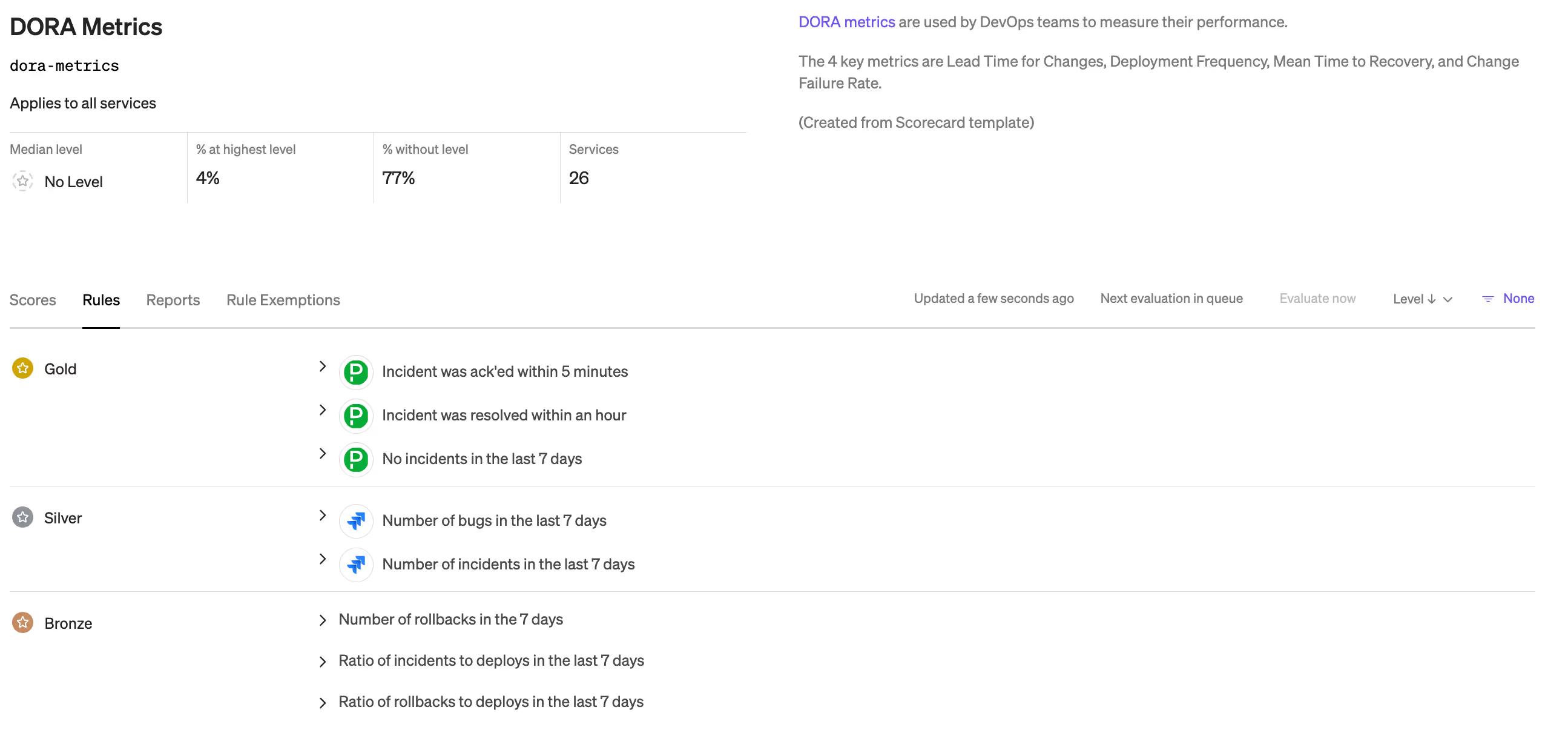
[NEW] Improved Executive Reporting: Your ideal reporting structure should inform how you build your information architecture. Starting from the questions developers might ask like, “What is the health of my services,” and moving outward to executive queries like, “Which revenue-generating product line requires more engineering support?” can help you think through both the grouping and level of granularity you’ll need to accommodate with your information architecture. While Cortex provides a variety of out-of-the-box reports for tracking progress against Scorecards and Initiatives, the Executive Report in particular has gained significant attention from our users. Prioritized views of baseline metrics, team progress, and at-risk services help executives get up to speed quickly, so they can make budget and resource decisions with more confidence.
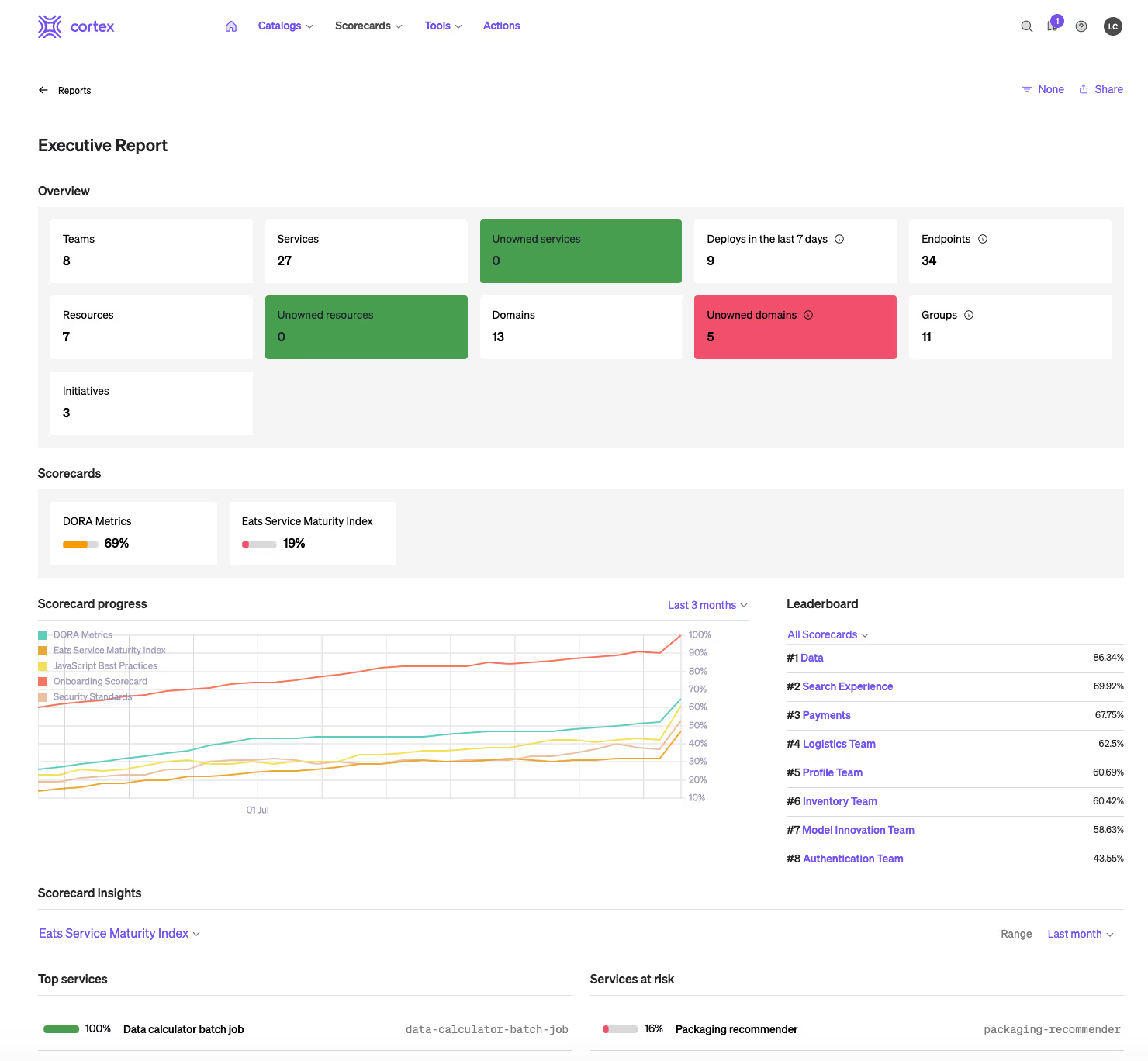
Default to personalized views
The ease of which your developers can access information about their services, understand dependencies, and take immediate action is a direct reflection of your information architecture. Importantly, it’s not just access to information that makes a difference, it’s access to the right information, where and when they need it.
[NEW] Improved Developer Homepage: The Cortex Developer Homepage is a wholly unique experience in the world of IDPs. A hybrid interactive dashboard, task manager, and quick reference library, the Dev Homepage provides a personalized view of information each developer needs to stay on track—without needing to hop between different tools.
In minutes: Streamline basic operational activities like acknowledging on-call rotations, actioning PRs, and reviewing status of open issues. Tackle critical tasks in your queue by due date and severity.
Over time: Make incremental improvements with auto-surfaced suggestions of low-effort, high-impact wins that increase component health and alignment to best practices.
As needed: Drill down for more context on actions, issues, services, and more without having to leave the Cortex platform.
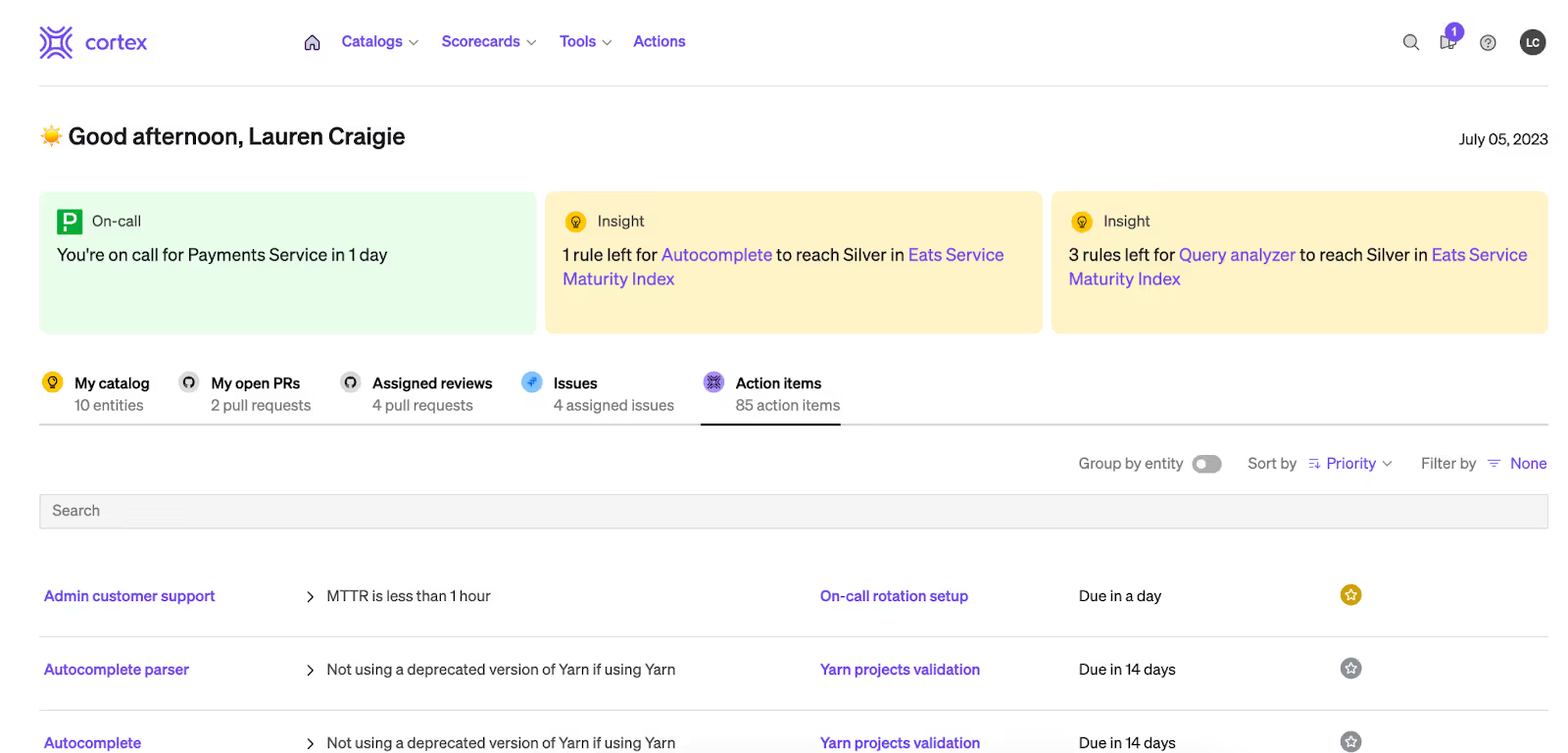
Bringing it all together
To expedite the creation of a robust information architecture, your team needs logical defaults, with the ability to customize where needed. Cortex provides the best of both. If you’d like our help in thinking through your own information architecture, choose a time to meet with us today, or join our upcoming live session where Ganesh Datta, Cortex Co-founder and CTO will share best practices for building your information architecture.





